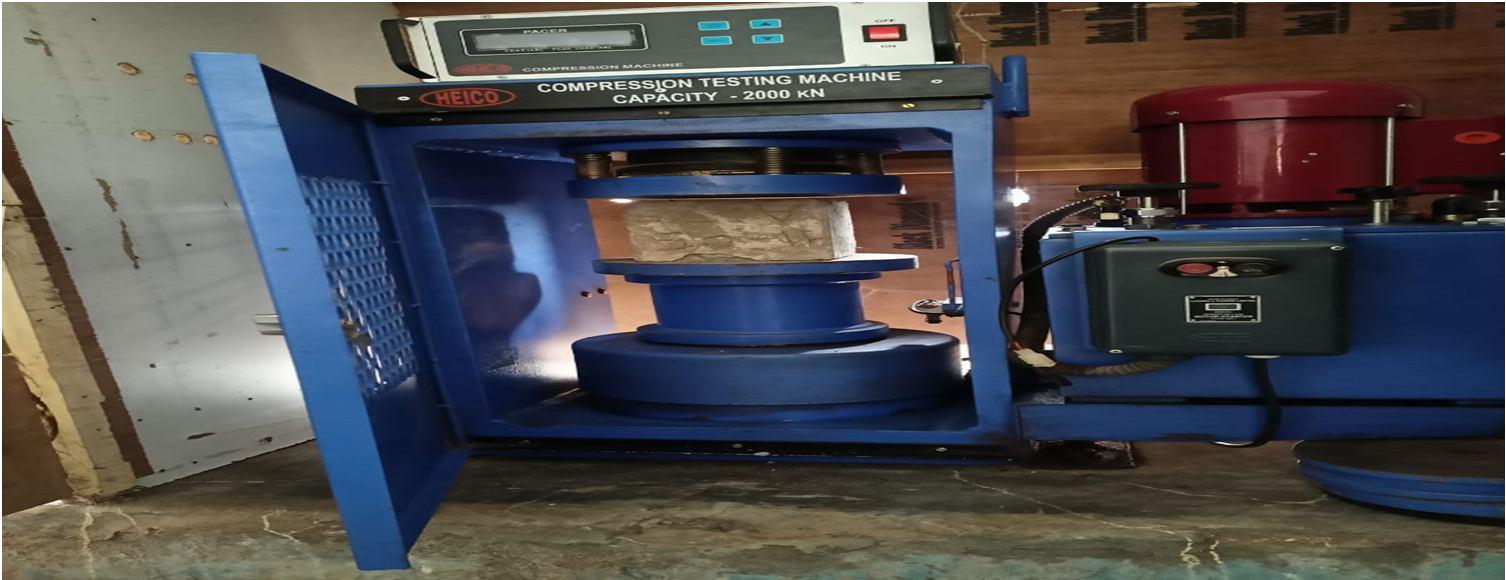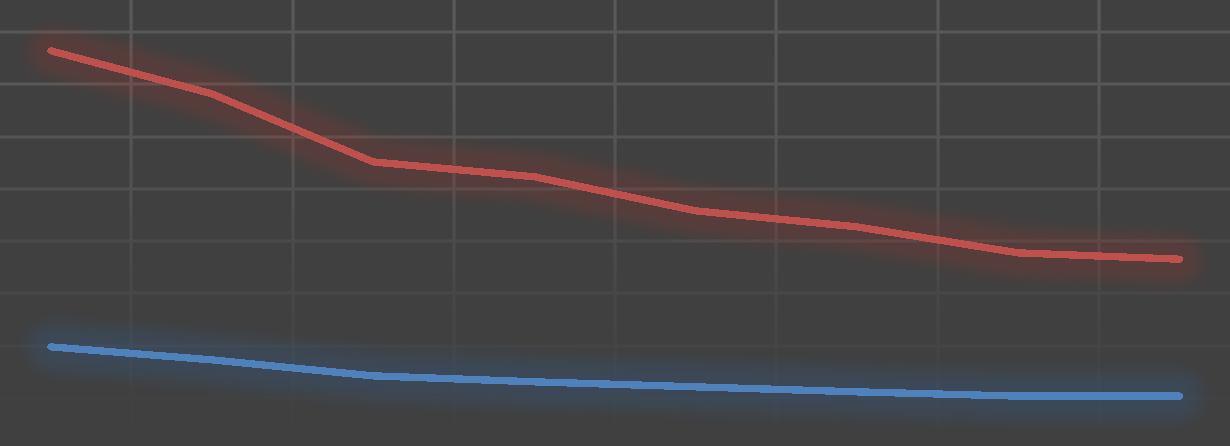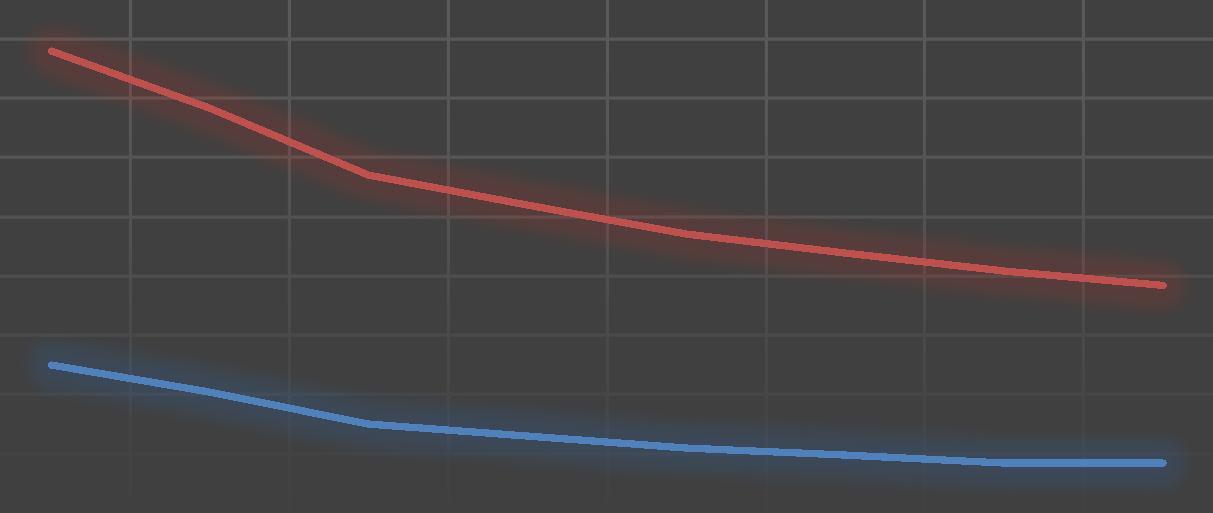
ISSN: 2321-9653; IC Value: 45.98; SJ Impact Factor: 7.538 Volume 10 Issue XII Dec 2022- Available at www.ijraset.com


ISSN: 2321-9653; IC Value: 45.98; SJ Impact Factor: 7.538 Volume 10 Issue XII Dec 2022- Available at www.ijraset.com
1
2
Student, Head of the Department, Department of Civil Engineering, Laxminarayan College of Technology, Bhopal, India
Abstract: Waste tea ash can be utilized effectively as an alternative option for cement replacement in concrete. The consequences of PWTA insertion on concrete is discussed in this paper. PWTA is used in different percentages mix in manufacturing of paver blocks.M35 grade of paver block is designed and tested. The results of the Strength properties of PWTA in paver block is provided in this experimental study.
Thisarticlediscussesarecent studyon thecharacteristicsofconcretepavementblocksmadefromPWTA that have been contaminated with common building. In this experimental study crushed stone, sand, Cement, PWTA and water is used. Crushed Stone is a byproduct from stonecrushing sites. To replace the amount of cement PWTA is used. Paver Blocks prepared with a percentage variation ofPWTA as 0%, 5%, 15%, 25%, 35%, 45%,55% and 60% in Mix grade of M35(1:05:1) For laboratory-prepared samples, the parameters of workability, density, compressive strength, water, flexural strength, split tensile strength, initial and final setting time and absorption value is tested. It is suggested, to enable a wider use of PWTA with foreign materials.
Composite cement with a specific gravity of 3.25 is used in the present study. Natural river sand with a fineness modulus of 2.77 and a specific gravity of 2.58, respectively, is used as fine aggregate. Crushed stone with specific gravity2.83g/cm3 and maximum size aggregate 5mm, respectively is used as coarse aggregate. PWTA is a by-product obtained from tea factories. PWTA is oven dried at 105 0C for 24 hours. The PWTA has a specific gravity of 2.05 with maximum particle size of 300 mm.

The paver blocks are prepared in laboratory to study the strength properties of PWTA in paver blocks as partial replacement of cement. The paver blocks prepared as mix design of M35 grade concrete mix design. The PWTA is used in proportion mix of 0%,5%,15%,25%,35%,45%,55% and 60% respectively by weight of cement with required amount of water. Brick shape mould of size 200x100x60mm is used to make M35 grade of paver block. Mix proportion of specimens is given in table no.2.
1) Properties of PWTA is given in table no.1 below:
Table
ISSN: 2321-9653; IC Value: 45.98; SJ Impact Factor: 7.538 Volume 10 Issue XII Dec 2022- Available at www.ijraset.com

Table No.2 Mix Proportion of Materials used

S. No. MIX ID WATER (Kg/m3) CEMENT (Kg/m3) PWTA (Kg/m3) SAND (Kg/m3) CRUSHED STONE (Kg/m3)
1 M0 0.469 1.174 0 0.587 1.174 2 M5 0.481 1.115 0.058 0.587 1.174 3 M15 0.516 0.998 0.1759 0.587 1.174 4 M25 0.563 0.880 0.587 0.587 1.174 5 M35 0.610 0.7631 0.4109 0.587 1.174 6 M45 0.633 0.6457 0.5283 0.587 1.174 7 M55 0.680 0.5283 0.6457 0.587 1.174 8 M60 0.704 0.4696 0.7044 0.587 1.174
1) Workability: The workability of the paving blocks depends on the amount of water added into the mix to prevent the block sag after the removal of the molds. Workability is defined as water to cement ratio(w/c) the amount of water required so that the concrete mix should not bleed or segregate. W/C of M35 grade is given below in table no.3
Table No.3 Workability of M35 Grade Paver Blocks S. No. MIX ID Water/binder ratio 1 M0 0.4 2 M5 0.41 3 M15 0.44 4 M25 0.48 5 M35 0.52 6 M45 0.54 7 M55 0.58 8 M60 6.0
2) Density: The density of M35 Grade paving blocks is determined by applying the sample into a drying oven at 1050C for 24h and then cooled at 25+ 2 0C for 5h. Afterward, the samples are weighted. Density is calculated by dividing the weight by the volume of the sample. Density results of M35 grade paver blocks with PWTA is given below in the table no.4.
Table No. 4 Density of Paver Blocks S. No. Mix ID Density (kg/m3) 1 M0 2446 2 M5 2414 3 M15 2402 4 M25 2358 5 M35 2306 6 M45 2270 7 M55 2221 8 M60 2212
ISSN: 2321-9653; IC Value: 45.98; SJ Impact Factor: 7.538 Volume 10 Issue XII Dec 2022- Available at www.ijraset.com

3) Compressive Strength Test: Compressive strength of the paver blocks is tested after 7 and 28 days in this study. Compressive strength of paver blocks is determined with the help of universal testing machine in the laboratory. The load applied gradually on paver blocks to identify the failure load of Paver blocks. The compressive strength is calculated by using formula given below: σ C = P/A where, σ C is compressive strength in N/mm2.P is the failure load of paver block in N, and A is the area of applied load. The compressive strength obtained after 7 and 28 days is given below in table no.5 and graph is plotted as graph no.1.
Figure no.1 Compressive strength testing
Compressive Strength Compressive Strength of M35 grade in N/mm2 Compressive Strength of M35 grade in N/mm2
37.76 34.04 29.61 27.93 26.03 24.29 22.67 21.87 0 10 20 30 40 50 60 70 1 2 3 4 5 6 7 8 Compressive Strength in N/mm2 MIX ID

Table No. 5 Compressive strength test results of M35 grade Paver Blocks S. No. MIX ID Compressive Strength of M35 grade in N/mm2 7 days 28 Days 1 M0 24.79 37.76 2 M5 21.51 34.04 3 M15 17.8 29.61 4 M25 16.47 27.93 5 M35 15.01 26.03 6 M45 14.04 24.29 7 M55 13.32 22.67 8 M60 12.97 21.87 Graph no. 1 Mix vs Compressive strength of paver blocks
24.79 21.51 17.8 16.47 15.01 14.04 13.32 12.97




Science & Engineering Technology (IJRASET

ISSN: 2321-9653; IC Value: 45.98; SJ Impact Factor: 7.538 Volume 10 Issue XII Dec 2022- Available at www.ijraset.com
4) Flexural Strength Test: Flexural strength of the paver blocks is tested after 7 and 28 days in this study. The block sample was placed in the flexural beam apparatus and subjected to a 3-point loading with a clear span of 170 mm. The load was applied to the paving block sample through a steel rod until failure of the sample. The flexural strength of each sample was determined using formula give below. of Paver blocks. The compressive strength is calculated by using formula given below: σ f = 1.5 PL/(bd2) where, σ f the flexural strength (N/mm2), P is the failure load of the sample (N), L is the span length (mm); and b and d are the width and depth of the sample (mm), respectively. The flexural strength test results is given below in table no.6 and graph is plotted as graph no.2.
Table No.6 Flexural strength Results of M35 grade Paver blocks S. No MIX ID Flexural Strength in N/mm2 7 Days 28 Days
1 M0 1.98 5.66 2 M5 1.72 5.1 3 M15 1.42 4.1 4 M25 1.31 3.91 5 M35 1.20 3.38 6 M45 1.12 3.15 7 M55 1.06 2.72 8 M60 1.03 2.62


Flexural Strength 7 Days 28 Days
Flexural Strength in N/mm2 MIX ID
1.98 1.72 1.42 1.31 1.2 1.12 1.06 1.03
5.66 5.1 4.1 3.91 3.38 3.15 2.72 2.62 0 1 2 3 4 5 6 7 8 9 1 2 3 4 5 6 7 8

Graph no. 2 Mix vs Flexural strength of paver blocks
5) Split Tensile Strength: The split tensile strength is used to determined the tensile strength of concrete. Concrete is brittle in nature and it is weak in tension and causes cracks. It becomes necessaryto perform tensilestrength test in concrete. A method of determining the tensile strength of concrete using a cylinder which splits across the vertical diameter. It is an indirect method of testing tensile strength of concrete. Apparatus used Testing machine, Plate or supplementary Bearing Bar, Bearing strips, Cylinder specimen, Tamping rod The Split Tensile Strength is calculated as follows: T = 2P ÷ πDL Where, T is the splitting tensile strength (N/mm2), P is the maximum load on the specimen (N).D is the diameter of the specimen (mm),L is the length of the specimen(mm).Th split tensile strength results is given below in table no.7and graph is plotted as graph no.3.

ISSN: 2321-9653; IC Value: 45.98; SJ Impact Factor: 7.538 Volume 10 Issue XII Dec 2022- Available at www.ijraset.com

Table No. 7 Split Tensile Strength Results of M35 Grade Paver Block
S. No. MIX ID
Split tensile Strength in N/mm2 7 Days 28Days
1 M0 3.50 5.3 2 M5 3.04 4.8 3 M15 2.5 4.2 4 M25 2.3 3.9 5 M35 2.1 3.6 6 M45 1.98 3.4 7 M55 1.88 3.2 8 M60 1.84 3.0


Split Tensile Strength 7 Days 28Days
5.3 4.8 4.2 3.9 3.6 3.4 3.2 3 0 1 2 3 4 5 6 7 8 9 10 1 2 3 4 5 6 7 8
Split Tensile Strength in N/mm2 MIX ID
3.5 3.04 2.5 2.3 2.1 1.98 1.88 1.84
Graph no. 3 Mix vs Split tensile strength of paver blocks

6) Initial Setting Time: Initial setting time is the time when paste starts hardening. Final setting time is the time when paste gets sufficiently hard and does not allow any penetration. Initial and final setting time both are calculated with the help of Vicats Apparatus. The vicat square needle penetrates a depth of 33-35mm from the top (5 to 7mm) from the bottom of the mould of the Vicat Apparatus. The device which is used to find the initial setting time of cement is called as Vicats Apparatus.It has a square needle of 1mm size and 50mm length and a mould, which is 40mm n height and 80mm in diameter. The initial and final setting time observed are 35-40 minutes and 2-5 hours respectively
7) Water Absorption: The water absorption of Paver Blocks is determined at 28days. The test is conducted as per IS:15658. For the water absorption test the specimens immersed in the water for 24 hours. After 24 hours the blocks taken out and wiped off with cloth and weight of the specimen in wet condition were recorded as W2. After the saturation the specimen are dried in a ventilated oven at 105 0C for not less than 24 hours. The dry weight of each specimen W1 is recorded in kg. Table no.6 contains 5% of water absorption of paver blocks and graph is plotted as graph no.8 The percentage of water absorption was calculated as:
Water absorption (%) = (W2 – W1)/W1 x 100

ISSN: 2321-9653; IC Value: 45.98; SJ Impact Factor: 7.538 Volume 10 Issue XII Dec 2022- Available at www.ijraset.com

Table No.8 Water absorption of Paver block of M35 grade with % of PWTA
Water Absorption in % MIX ID
6 6.12 6.5 6.9 7.38 8.66 9.62 10.11 M0 M5 M15 M25 M35 M45 M55 M60
Graph no. 4 Water absorption of paver blocks

8) Carbon Emissions: The present study estimated the CO2 emissions of Paver block mixture containing PWTA as a cement replacement. Estimation of CO2 emissions is carried out based on per cubic meter of concrete, which has been commonly used by previous researchers to estimate the CO2 emissions of concrete [10–12]. The CO2 emission factors of the mixture components (water, cement, PWTA, sand and crushed stone) is based on previous research works and databases [11,13]. The CO2 emissions is calculated by using formula given below:
EF = WC x EFc + Wca x EFca + Wfa x EFfa
Where, WC is weightof cement per 1 m3 of concrete (kg)
WCa is Weight of coarse aggregate per 1 m3 of concrete (kg)
Wfa is Weight of fine aggregate per 1 m3 of concrete (kg)
EFc is Emission factor-cement (kg-CO2/t-cement)
EFca Emission factor-coarse aggregate production (kg-CO2/t-aggregate)
EFfa Emission factor-fine aggregate (kg-CO2/t-fine aggregate)
Replacing cement with PWTA can reduce CO2 emissions, and it depends on the amount of PWTA used. It is observed that total CO2 emissions for whole project for M35 grade Paver blocks prepared with PWTA generated is 90.69 kg/m3 .


ISSN: 2321-9653; IC Value: 45.98; SJ Impact Factor: 7.538 Volume 10 Issue XII Dec 2022- Available at www.ijraset.com
Initial and final setting time is 35-40 minutes and 2-5 hours recorded. The density of the PWTA paving blocks decreased as the percentage of cement replacement increased because the PWTA has a lower density than that of the cement. Increased PWTA content decreased the paving block quality in terms of compressive strength, flexural strength, split tensile strength. The results of compressive strength and water absorption showed that the replacement of cement with up to 35%. PWTA as a replacement for cement in paving blocks could help in decreasing CO2 emissions from cement production and allow the production of a more sustainable and low-cost paving block. Workability is increasing as w/c ratio is increasing with PWTA. The present study utilized PWTA as a replacement for cement to produce paving blocks. The results showed that the porous surfaces of PWTA increased the water to binder ratio of paving block with increasing the PWTA content as a cement replacement
[1] J Venkateswara Rao, Mr. S Rajesh, Mr. Gopi Shankar (2014) “An Experimental Study on Partial Replacement of Cement and Fine Aggregates with Industrial Waste in concrete Paver Blocks”. IOP conf. Series: Materials Science and Engineering dol;10.1088/1757-899X/1006/1/012014.
[2] E. Anji Reddy, Vishal Gupta, Deepak Garg(2015) “Effect of Partial Replacement of Cement by Rice Husk Ash Using Nylon Fiber in Concrete Paver Block”. IJSRD- International Journal for Scientific Research and Development/ Volume 3, Issue 03,2015/ISSN (online):2321-0613.
[3] E.Gifty,N.Harini Devi,P.Meena,S.Gunasekar (2019)“Strength Property Study on Paver Block Made with Recycled Concrete Aggregates- An Experimental Review”. International Research Journal of Multidisciplinary Technovation (IRJMT).ISSN 2582-1040 2019;1(6);480-485.
[4] Esubalew Kasaw, Zelalem Adane Gemeda Gebino, Nakachew Assefa, Abera Kechi, and Ketema Alemu(2021) “Incineration of Textile Sludge for Partial Replacement of Cement in Concrete Production: A case of Ethiopian Textie Industries”. (Hindawi) Advances In Material Science and Engineering Volume 2021, Article ID 9984598, 6 pages. Volume 2021, Article ID 9984598, 6 pages https:/ /doi.org/10.l 155/2021/9984598
[5] G.A. Habeeb, H.B. Mahmud, Study on properties of rice husk ash and its use as cement replacement material, Mater. Res. 13 (2010) 185–190.
[6] Gadekar Akash , Chaskar Bhushan, Hande Shamrao, Pawar Prashant (2019)“Manufacturing of Paver Block Using Demolished Construction Waste”. Journal of Emerging Technologies and Innovative Research (JETIR), February 2019, Volume 6, Issue 2(ISSN-2349-5162).
[7] Abdul Rachman Djamaluddin, Muhammad Akbar Caronge, M.W. Tjaronge, Asiyanthi T. Lando, Rita Irmawaty,Evaluation of sustainable concrete paving blocks incorporating processed waste tea ash,Case Studies in Construction Materials,Volume 12,2020,e00325,ISSN 2214-5095,
[8] Bhairob Deori1 Vishal Gupta(2016) “Utilization of Jute Fiber in Cement Concrete Paver Blocks”. International Journal for Scientific Research and Development/ Volume 4, Issue 05,2016/ISSN (online):2321-0613.
[9] Chi-Sun Poon and Dixon Chan,Effects of contaminants on the properties of concrete paving blocks prepared with recycled concrete aggregates,Construction and Building Materials,Volume 21, Issue 1,2007,Pages 164-175,ISSN 0950-0618,https://doi.org/10.1016/j.conbuildmat.2005.06.031.
[10] D.M. Sadek, M.M. El-Attar, A.M. Ali, Physico-mechanical and durability characteristics of concrete paving blocks incorporating cement kiln dust, Constr. Build. Mater. 157 (2017) 300–312.
[11] M. Elchalakani, T. Aly, E. Abu-Aisheh, Sustainable concrete with high volume GGBFS to build Masdar City in the UAE, Case Stud. Constr. Mater. 1 (2014) 10–24.
[12] K.H. Yang, S.H. Tae, D.U. Choi, Mixture proportioning approach for low-CO2 concrete using supplementary cementitious materials, ACI Mater. J. 113 (4)(2016) 533–542
[13] S.J. Kwon, X.Y. Wang, Optimization of the mixture design of low-CO2 high-strength concrete containing silica fume, Adv. Civ. Eng. (2019) ID 7168703
[14] N. Hill, E. Bonifazi, R. Bramwell, E. Karagianni, B. Harris, Government GHG Conversion Factors For Company Reporting: Methodology Paper For Emission Factors – Final Report, Department for Business.
[15] IS 10262: 2009 Indian standard -Concrete mix proportioning - guidelines, Bureau of Indian standard, 2009, New Delhi.
[16] IS 16415: 2015 for composite cement, Bureau of Indian Standards
[17] IS 456:2000 Indian standard -Plain and reinforced concrete – Code of Practice, Bureau of Indian Standards , 2000, New Delhi.
[18] IS: 15658:2006, Pre cast concrete block for paving, Bureau of Indian Standards”, New Delhi.
[19] IS: 383-1970, “Specifications for coarse and fine aggregates from Natural Sources for Concrete”, 1970.
[20] IS: 516- 2006, Indian Standard Methods of tests for strength of concrete,

